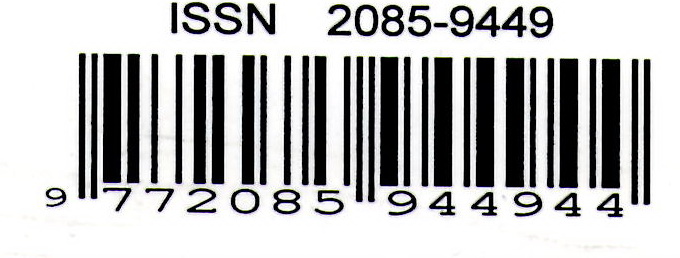KEANEKARAGAMAN PLANKTON WADUK BENANGA DI KOTA SAMARINDA
Abstract
This study aims to determine the diversity of Plankton at Station I (reservoir inlet section) Station II, III, IV (central reservoir) and Station V (Outlet section reservoir) in the Benanga reservoir. When the study was conducted in July-August 2019 at five stations with three replications in a span of one week. Plankton identification was carried out at the Water Quality Laboratory of the Faculty of Fisheries and Marine Sciences. Data results were analyzed using a diversity t-test comparison. Plankton is a waters bioindicator. Based on observations found 49 types of plankton consisting of 22 types of phytoplankton and 27 zooplankton with the five most species found phytoplankton species of the Euglenaceae class namely Euglena proxima, Chlorophyceae class namely Closterium kuetzingii brebisson, Euglenoideae class namely Trachelomonos sp. Of the zoopalnkton species found from the Arcellidae class namely Arcella vulgaris and from the Eurotatoria class Monostyla hamata. The Diversity Index (H ') for the five stations ranged from 1,823 to 2,403 and was classified as moderate. Based on the comparison of t-test Diversity to the five stations were not significantly different. The uniformity index value is in the range of 0.608 to 0.804 and the dominance index value ranges from 0.120 to 0.238. The amount of abundance ranges from 8.6542.
Keywords
Full Text:
PDFReferences
Andini, N.A. 2014. Kandungan Limbah Domestik Pada Perairan Waduk Benanga [skripsi]. Samarinda. Fakultas Perikanan dan Ilmu kelautan Universitas Mulawarman.
Apdus, S. 2010. Analisis Kualitas Air Situ Bungur Ciputat Berdasarkan Indeks Keanekaragaman Fitoplankton [skripsi]. Jakarta. UIN Syarif Hidayatullah.
Barus, T.A. 2004. Pengantar Limnologi Studi Tentang Ekosistem Air Daratan [skripsi]. Medan. FMIPA, Universitas Sumatera Utara.
Daniek, A.H. 2017. Studi Keanekaragaman Zooplankton Sebagai Bioindikator Kualitas Perairan Anyar (Anak Sungai Bewngawan Solo) Surakarta. [skripsi]. Surakarta. Jurusan Biologi Fakultas Keguruan dan Pendidikan Universitas Muhammadiyah.
Fachrul, M.F. 2007. Metode Sampling Bioekologi. Bumi Aksara. Jakarta.
Garno, Y.S. Kualitas air dan dinamika fitoplankton di Perairan Pulau Harapan. J. Hidrosfir Indonesia 2008; 3: 87-89.
Hardjosuwarno, S. 1990. Dasar-Dasar Ekologi Tumbuhan. Yogyakarta. Fakultas Biologi, UGM
Hidayat, M. 2012. Keanekaragaman Plankton di Waduk Keuliling Kecamatan Kuta Cot Glie Kabupaten Aceh Besar [skripsi]. Banda Aceh. Program Studi Pendidikan Biologi FITK IAIN Ar-Raniry.
Hutauruk, R.W. 1997. Toksisitas Minyak Mentah (Crude Oil) Duri Terhadap Chlorella Variegatus [skripsi]. Pekanbaru. Fakultas Perikanan, Universitas Riau.
Kartono, N. 2002. Studi Perbandingan Struktur Komunitas Zooplankton di Ranu Pani dan Ranu Regulo Taman Nasional Bromo Tegger Semeru [skripsi]. Malang. Jurusan Biologi FMIPA Universita Brawijaya.
Leksono, S.A. 2007. Ekologi Pendekatan Deskriptif dan Kuantitatif. Bayumedia Pulishing. Malang
Magurran, A.E. 1988. Ecology Diversity and Its Measurement. Princeton University Press. New Jersey.
Mizuno, T. 1966. Illustrations Of The Freshwater Plankton Of Japan. Hoikusha Publishinh Co. Ltd. Japan
Nybakken, J.W. 1992. Biologi Laut Suatu Pendekatan Ekologis. PT. Gramedia Pustaka Utama. Jakarta.
Odum, E.P. 1993. Dasar-Dasar Ekologi. Terjemahan Tjahjono Samingan. Edisi Ketiga. Yogyakarta. Gadjah Mada University Press.
Pambudi A, Priambodo TW, Noriko N, dan Basma. Keanekaragaman fitoplankton Sungai Ciliwung pasca kegiatan bersih Ciliwung. Jurnal Al-Azhar Indonesia 2016; 3: 204– 212
Thoha, H. Kelimpahan plankton di Perairan Teluk Gilimanuk Taman Nasional Bali Barat. Makara Sains 2007; 11: 44-48.
Wardoyo, S.H. 1975. Pengelolaan Kualitas Air. Institut Pertanian Bogor. Bogor 1-40p.
Refbacks
- There are currently no refbacks.
Copyright (c) 2023 Jurnal Aquarine
Jurnal Aquarine (JAQ) / ISSN : 2085-9449
Organized by - Mulawarman University
Email : jurnal.aquarine@gmail.com

Jurnal Aquarine (JAQ)is licensed under a Creative Commons Attribution-ShareAlike 4.0 International License.





